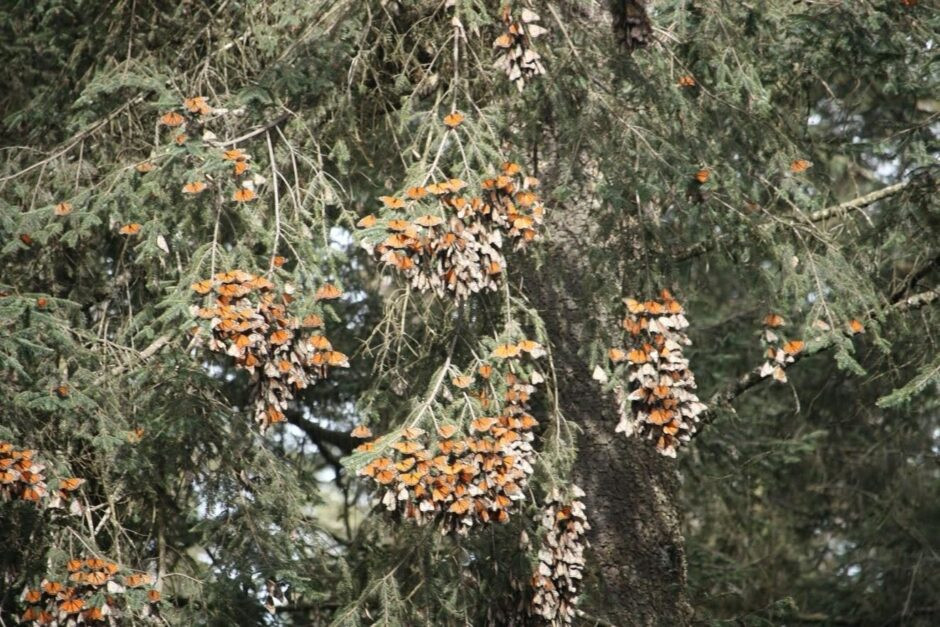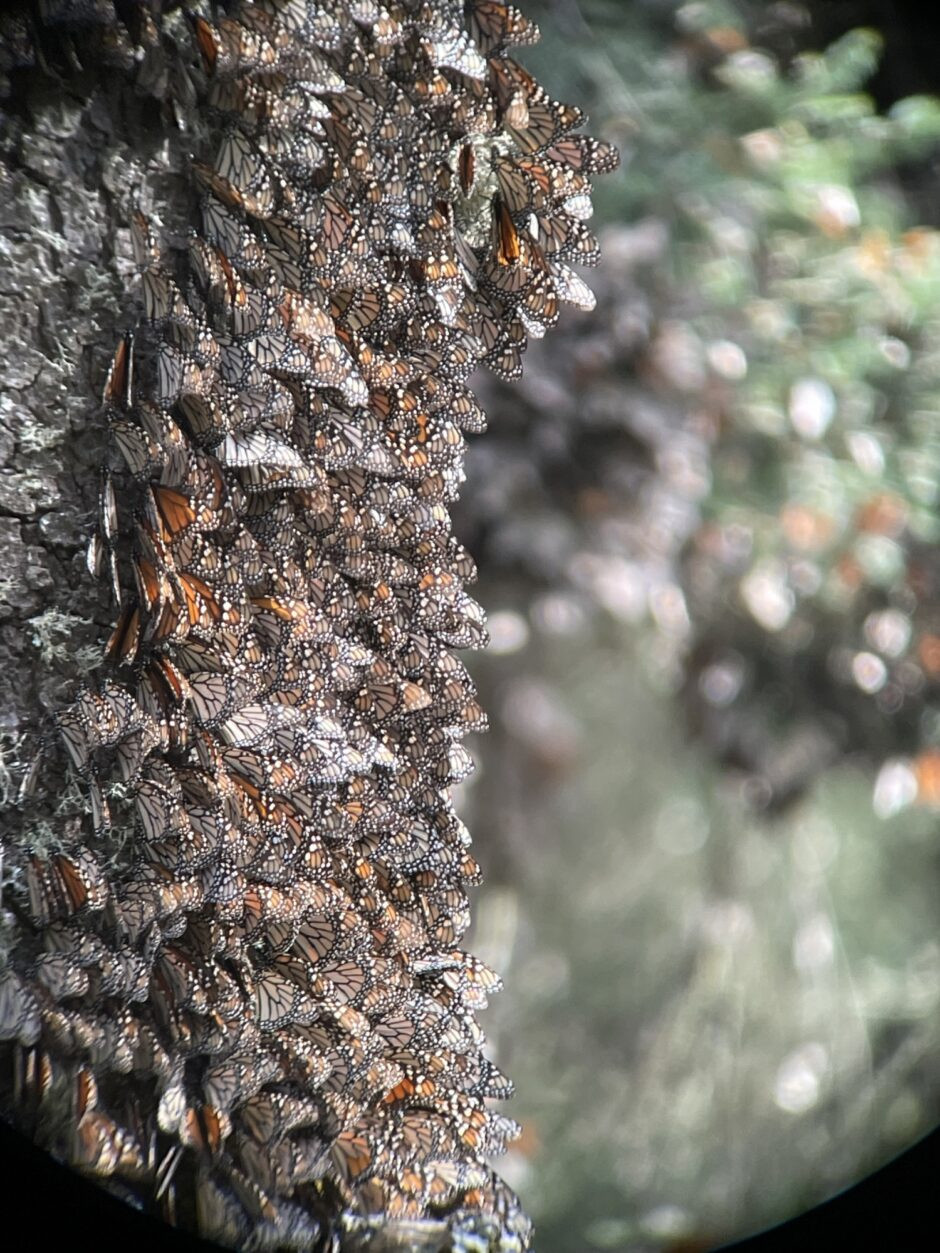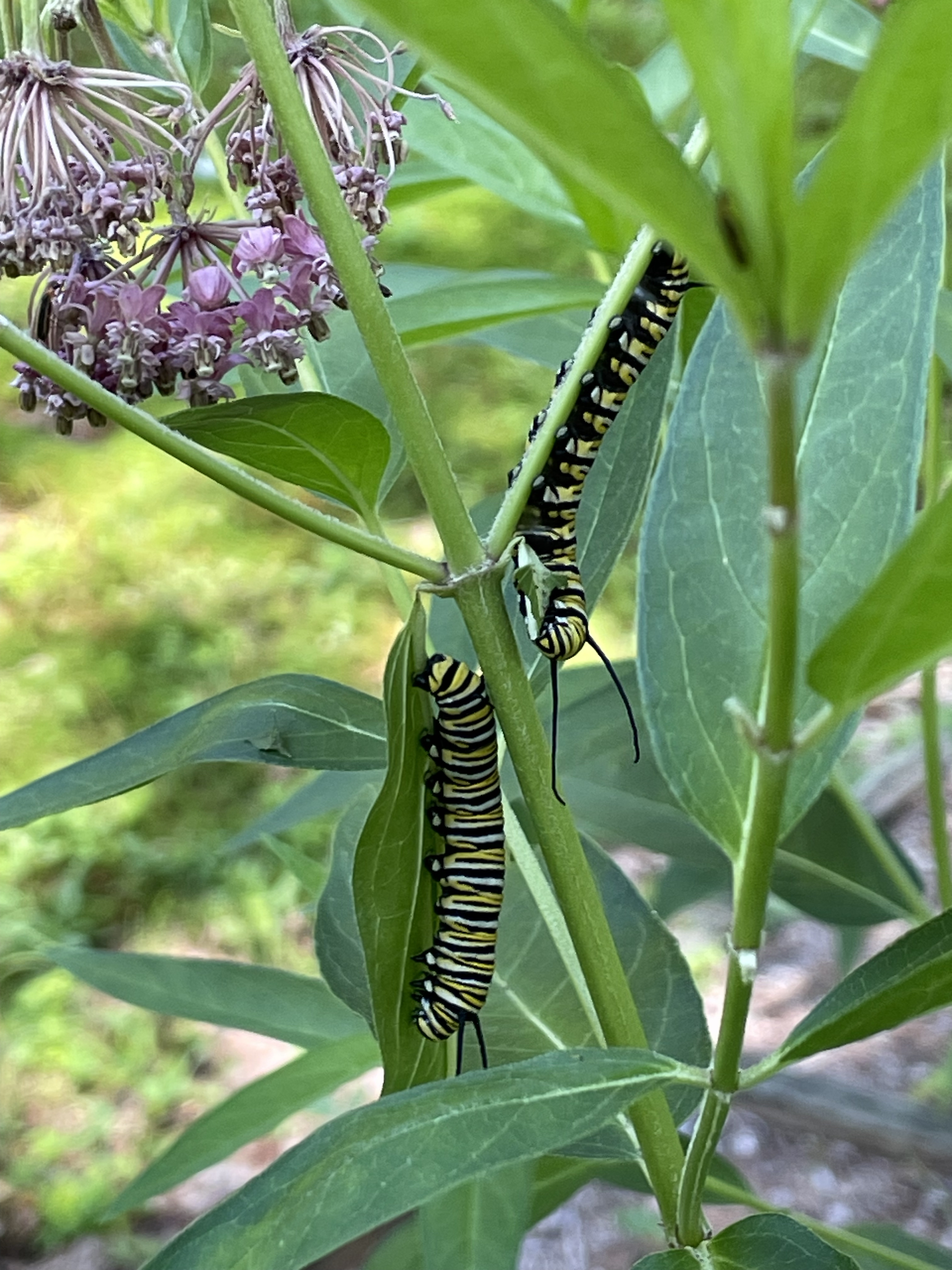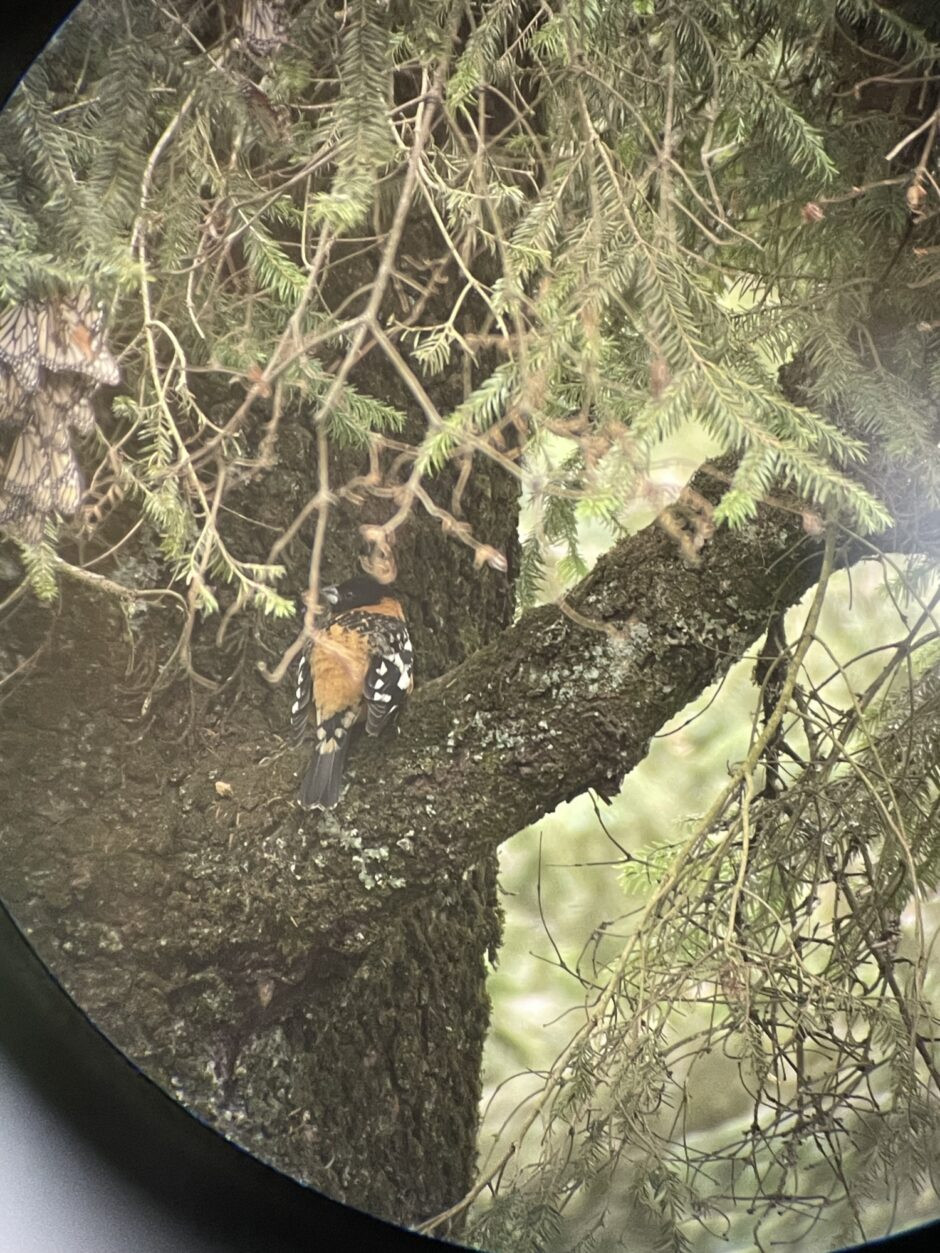Are you fascinated by the incredible journey of monarch butterflies and curious about their winter destination in Mexico? At gaymexico.net, we provide a comprehensive guide for LGBTQ+ travelers eager to witness this natural spectacle. Discover the beautiful sanctuaries where these delicate creatures find refuge, and learn how you can experience this wonder while exploring the welcoming culture of Mexico. Find out everything you need to know about monarch migration, reserve locations, and LGBTQ+-friendly travel tips for an unforgettable trip.
1. What Are The Monarch Butterfly Sanctuaries In Mexico?
The monarch butterfly sanctuaries in Mexico are vital protected areas where millions of monarchs overwinter, primarily located in the states of Michoacán and Mexico State. These sanctuaries, part of the Monarch Butterfly Biosphere Reserve, offer a unique and breathtaking experience, allowing visitors to witness the incredible phenomenon of monarch migration.
1.1. What Makes The Monarch Butterfly Sanctuaries Special?
These sanctuaries are special because they provide the specific climate and forest conditions necessary for monarch butterflies to survive the winter months. The Oyamel fir forests at high altitudes offer insulation and protection from extreme weather. According to a 2020 report by the World Wildlife Fund (WWF), the microclimate within these forests is crucial for the butterflies’ survival, maintaining temperatures and humidity levels that prevent them from freezing or dehydrating.
1.2. Where Are The Most Popular Monarch Butterfly Sanctuaries Located?
The most popular monarch butterfly sanctuaries are located in the Mexican states of Michoacán and Mexico State, easily accessible from major cities like Mexico City. Some of the most visited sanctuaries include:
- Sierra Chincua: Known for its accessibility and stunning views.
- El Rosario: The largest and perhaps most famous sanctuary, often crowded but offering an unparalleled spectacle.
- Cerro Pelón: A more remote and less crowded option, providing a more intimate experience.
- La Mesa: A smaller, community-run sanctuary offering a unique cultural experience.
1.3. What Can Visitors Expect When Visiting These Sanctuaries?
Visitors can expect a moderate to challenging hike up the mountains to reach the butterfly colonies. Local guides are available to provide information about the butterflies and the surrounding ecosystem. It’s an awe-inspiring experience to witness millions of butterflies clustered on trees, creating a mesmerizing orange canopy. Remember to wear comfortable shoes, bring water, and dress in layers, as the weather can change quickly at high altitudes.
2. When Is The Best Time To See The Monarch Butterflies In Mexico?
The best time to see the monarch butterflies in Mexico is from November to March, with the peak usually occurring in January and February. During these months, the butterflies have completed their migration from Canada and the United States and are clustered in the Oyamel fir forests of the Monarch Butterfly Biosphere Reserve.
2.1. How Does The Time Of Year Affect The Monarch Butterfly Migration?
The time of year significantly affects the monarch butterfly migration because it dictates the butterflies’ life cycle and behavior. Monarchs cannot survive freezing temperatures, so they migrate to warmer climates during the winter months. According to a study by the Commission for Environmental Cooperation (CEC) in 2017, the timing of the migration is closely linked to temperature and daylight hours, triggering the butterflies to move south when conditions become unfavorable.
2.2. What Should Visitors Know About Planning A Trip During Peak Season?
During peak season, the sanctuaries can be crowded, so it’s advisable to arrive early in the day to avoid the largest crowds. Booking a tour with a reputable company can also help ensure a smooth and informative experience. It’s essential to check the weather forecast and dress appropriately, as temperatures can fluctuate. Additionally, be aware of the local regulations and guidelines to protect the butterflies and their habitat.
2.3. Are There Benefits To Visiting During The Shoulder Season?
Visiting during the shoulder season (November or March) can offer several benefits. There are fewer crowds, which means a more peaceful and intimate experience. The weather can still be pleasant, and you may have a better chance of interacting with local guides and learning about the butterflies without the hustle and bustle of peak season.
3. How Do Monarch Butterflies Migrate To Mexico?
Monarch butterflies undertake an extraordinary multi-generational migration to reach their overwintering sites in Mexico. The eastern population travels thousands of miles from Canada and the United States to the Oyamel fir forests. This journey is not completed by a single butterfly; rather, it is a relay race spanning several generations.
3.1. What Is The Monarch Butterfly Migration Route To Mexico?
The monarch butterfly migration route to Mexico generally follows a southward path from eastern Canada and the United States. Butterflies east of the Rocky Mountains converge in Texas and then continue to the mountains of central Mexico. As detailed in a 2019 report by the U.S. Fish and Wildlife Service, the journey is fraught with challenges, including habitat loss, pesticide use, and climate change.
3.2. How Long Does It Take Monarch Butterflies To Migrate To Mexico?
The migration can take up to two months, with the “super generation” of monarchs living much longer than the summer generations to complete the journey. These super monarchs live for about seven to eight months, whereas the summer generations only live for about two to six weeks.
3.3. What Are The Challenges Monarch Butterflies Face During Their Migration?
Monarch butterflies face numerous challenges during their migration, including:
- Habitat Loss: The destruction of milkweed, their primary food source, along their migration route.
- Pesticide Use: Exposure to pesticides, particularly neonicotinoids, which can harm or kill them.
- Climate Change: Extreme weather events, such as droughts and severe storms, can disrupt their migration patterns.
- Illegal Logging: The degradation of the Oyamel fir forests in Mexico due to illegal logging.
 The sheer number of Monarchs is staggering, even though we know they are down from years past.
The sheer number of Monarchs is staggering, even though we know they are down from years past.
Alt text: Overwintering monarch butterflies densely clustered on Oyamel fir trees in a Mexican sanctuary.
4. What Can LGBTQ+ Travelers Expect When Visiting Monarch Sanctuaries?
LGBTQ+ travelers can expect a welcoming and respectful environment when visiting monarch sanctuaries, though it’s essential to be aware of local customs and attitudes. While the sanctuaries themselves are generally safe and accepting, attitudes in smaller, more rural communities may be more conservative.
4.1. Are The Local Communities Around The Sanctuaries LGBTQ+-Friendly?
The local communities around the sanctuaries are becoming increasingly aware of and sensitive to LGBTQ+ travelers. While overt displays of affection may not be common, most locals are respectful and welcoming. According to local tourism reports, the area is seeing more international visitors, and there is a growing understanding of diverse lifestyles.
4.2. What Safety Tips Should LGBTQ+ Travelers Keep In Mind?
Safety tips for LGBTQ+ travelers include:
- Research Local Laws and Customs: Understand the local attitudes and laws regarding LGBTQ+ individuals.
- Be Mindful of Public Displays of Affection: Avoid overly affectionate behavior in public, especially in more conservative areas.
- Travel with Reputable Guides: Opt for tour operators and guides who are known to be LGBTQ+-friendly.
- Stay Informed: Keep up-to-date with local news and any potential safety concerns.
4.3. Are There LGBTQ+-Specific Resources Available For Travelers?
Yes, there are several LGBTQ+-specific resources available for travelers:
- GayMexico.Net: Provides travel tips, information on LGBTQ+-friendly accommodations, and local events.
- International LGBTQ+ Travel Association (IGLTA): Offers a directory of LGBTQ+-welcoming businesses and destinations.
- Local LGBTQ+ Organizations: Connect with local organizations for insights and advice.
5. What Is The Cultural Significance Of Monarch Butterflies In Mexico?
Monarch butterflies hold significant cultural importance in Mexico, often associated with the souls of ancestors returning during Día de los Muertos (Day of the Dead). This belief adds a layer of reverence to the butterflies’ presence in the sanctuaries.
5.1. How Are Monarch Butterflies Viewed In Mexican Culture?
In Mexican culture, monarch butterflies are viewed with a sense of reverence and awe. They are believed to represent the spirits of deceased loved ones returning to visit the living. This connection to the afterlife gives the butterflies a sacred status. As noted in a study by the National Museum of Mexican Art, this belief predates the arrival of Europeans and is deeply rooted in indigenous traditions.
5.2. What Role Do Monarch Butterflies Play In Día De Los Muertos Celebrations?
During Día de los Muertos, which takes place around the time the monarchs arrive in Mexico, the butterflies are seen as the embodiment of the returning spirits. Families often incorporate butterfly imagery into their altars and celebrations, believing that the butterflies guide the spirits home.
5.3. Are There Local Traditions Or Festivals Celebrating The Monarch Butterflies?
Yes, there are local traditions and festivals celebrating the monarch butterflies. Many communities hold welcome ceremonies for the butterflies, featuring music, dance, and traditional foods. These events are an opportunity for locals to express their gratitude for the butterflies’ return and to educate visitors about the importance of conservation.
6. What Are The Conservation Efforts To Protect Monarch Butterflies In Mexico?
Conservation efforts to protect monarch butterflies in Mexico are crucial due to the threats they face, including deforestation, climate change, and habitat loss. Various organizations and government agencies are working to preserve the Oyamel fir forests and promote sustainable practices.
6.1. What Organizations Are Involved In Monarch Butterfly Conservation?
Several organizations are actively involved in monarch butterfly conservation, including:
- World Wildlife Fund (WWF): Works to protect the Oyamel fir forests and promote sustainable forestry practices.
- Monarch Butterfly Biosphere Reserve (MBBR): A UNESCO World Heritage Site that manages and protects the sanctuaries.
- Monarch Joint Venture (MJV): A partnership of organizations dedicated to conserving monarch populations.
- Natural Habitat Adventures: Supports conservation efforts through ecotourism and education.
6.2. How Are Local Communities Involved In Conservation Efforts?
Local communities play a vital role in conservation efforts. Many residents work as guides, providing income while also educating visitors about the importance of protecting the butterflies. Sustainable tourism initiatives help ensure that the local economy benefits from the butterflies’ presence, incentivizing conservation.
6.3. What Can Travelers Do To Support Monarch Butterfly Conservation?
Travelers can support monarch butterfly conservation by:
- Choosing Sustainable Tourism Options: Opt for tour operators committed to responsible tourism practices.
- Respecting Sanctuary Rules: Follow the guidelines provided by the sanctuaries to minimize disturbance to the butterflies and their habitat.
- Supporting Local Businesses: Purchase goods and services from local businesses that prioritize conservation.
- Educating Others: Share your experiences and knowledge about monarch butterflies with friends and family to raise awareness.
- Donating to Conservation Organizations: Contribute to organizations working to protect monarch butterflies and their habitat.
 The detail, as seen through a spotting scope and photographed with my iPhone, is amazing!
The detail, as seen through a spotting scope and photographed with my iPhone, is amazing!
Alt text: Close-up of monarch butterflies clustered on a tree branch, showcasing intricate wing patterns.
7. What Are Some Recommended Tours To See The Monarch Butterflies?
Several tours offer the opportunity to witness the monarch butterflies in Mexico. These tours range from day trips to multi-day excursions, providing various options to suit different interests and budgets.
7.1. What Are The Benefits Of Joining A Guided Tour?
Joining a guided tour offers several benefits, including:
- Expert Knowledge: Guides provide valuable information about the butterflies, their migration, and the local ecosystem.
- Logistical Support: Tours handle transportation, accommodations, and permits, making the trip hassle-free.
- Safety: Guides are familiar with the terrain and can ensure your safety during the hike to the sanctuaries.
- Cultural Insights: Tours often include interactions with local communities, providing a deeper understanding of Mexican culture.
7.2. What Should Travelers Look For In A Reputable Tour Operator?
Travelers should look for the following qualities in a reputable tour operator:
- Experience: Choose a tour operator with a proven track record of successful trips to the monarch sanctuaries.
- Sustainability: Opt for companies committed to responsible tourism practices that minimize environmental impact.
- Local Partnerships: Look for tour operators who work closely with local communities and support their economy.
- Positive Reviews: Read reviews from past travelers to gauge the quality of the tour and the operator’s reputation.
- Accreditation: Check if the tour operator is accredited by relevant tourism organizations.
7.3. Can You Recommend Some LGBTQ+-Friendly Tour Options?
While not all tour operators explicitly cater to LGBTQ+ travelers, many are welcoming and inclusive. Consider the following when choosing a tour:
- Read Reviews: Look for reviews from LGBTQ+ travelers who have taken the tour.
- Contact the Operator: Reach out to the tour operator and inquire about their policies on inclusivity and diversity.
- Check for IGLTA Membership: Some tour operators are members of the International LGBTQ+ Travel Association, indicating their commitment to LGBTQ+ inclusion.
8. What Else Can You Do In The Monarch Butterfly Region?
Besides visiting the monarch butterfly sanctuaries, the region offers a wealth of other activities and attractions, allowing you to immerse yourself in Mexican culture and nature.
8.1. What Are Some Other Attractions In The Area?
Some other attractions in the area include:
- Angangueo: A charming mining town with colorful architecture and a rich history.
- Zitácuaro: A larger town offering a glimpse into everyday Mexican life, with markets, restaurants, and cultural events.
- Lake Zirahuén: A beautiful lake surrounded by forests, perfect for hiking, kayaking, and enjoying the natural scenery.
- Morelia: A UNESCO World Heritage city with stunning colonial architecture, located a few hours from the sanctuaries.
8.2. Are There Opportunities For Hiking And Outdoor Activities?
Yes, there are ample opportunities for hiking and outdoor activities in the region. Besides the hikes to the monarch sanctuaries, you can explore the surrounding forests, visit waterfalls, and enjoy horseback riding. Lake Zirahuén offers kayaking, fishing, and swimming opportunities.
8.3. Can You Experience Local Culture And Cuisine?
Yes, you can immerse yourself in local culture and cuisine. Visit local markets to sample traditional foods, such as corundas (tamales), uchepos (sweet corn tamales), and churipo (a spicy beef soup). Attend local festivals and celebrations to experience Mexican music, dance, and traditions.
 NH Monarch caterpillars in July 2024, getting ready for the next stage of life.
NH Monarch caterpillars in July 2024, getting ready for the next stage of life.
Alt text: Monarch caterpillars feeding on milkweed, illustrating the butterfly’s life cycle.
9. What Are Some Tips For Sustainable And Responsible Travel To The Sanctuaries?
Sustainable and responsible travel to the sanctuaries is essential to minimize your impact on the environment and support local communities.
9.1. How Can You Minimize Your Environmental Impact?
You can minimize your environmental impact by:
- Staying on Marked Trails: Avoid straying from designated paths to protect the delicate ecosystem.
- Avoiding Littering: Dispose of your trash properly and avoid leaving any waste behind.
- Using Reusable Water Bottles and Bags: Reduce your consumption of single-use plastics.
- Respecting Wildlife: Observe the butterflies from a distance and avoid touching or disturbing them.
- Choosing Eco-Friendly Accommodations: Opt for hotels and guesthouses that prioritize sustainability.
9.2. How Can You Support Local Communities?
You can support local communities by:
- Hiring Local Guides: Employ local guides who are knowledgeable about the area and can provide valuable insights.
- Purchasing Local Products: Buy souvenirs and crafts from local artisans to support their livelihoods.
- Eating at Local Restaurants: Dine at family-owned restaurants to experience authentic Mexican cuisine and support the local economy.
- Respecting Local Customs: Be mindful of local traditions and customs and show respect for the local culture.
9.3. What Should You Pack For A Trip To The Monarch Sanctuaries?
You should pack the following items for a trip to the monarch sanctuaries:
- Comfortable Hiking Shoes: You’ll be doing a lot of walking on uneven terrain.
- Layers of Clothing: The weather can change quickly at high altitudes, so dress in layers.
- Water Bottle: Stay hydrated during the hike.
- Sunscreen and Hat: Protect yourself from the sun.
- Camera: Capture the breathtaking beauty of the butterflies and the surrounding landscape.
- Binoculars: Get a closer look at the butterflies.
- Cash: Many local businesses do not accept credit cards.
10. What Are Some Common Misconceptions About Monarch Butterflies And Their Migration?
Several misconceptions exist about monarch butterflies and their migration, which can lead to misunderstandings about their conservation needs.
10.1. What Are Some Common Myths About Monarch Butterflies?
Some common myths about monarch butterflies include:
- Monarchs Only Live For A Few Days: While summer generations live for a few weeks, the migrating generation can live for several months.
- All Monarchs Migrate To Mexico: Only the eastern population migrates to Mexico; the western population overwinters in California.
- Monarchs Are Not Affected By Habitat Loss: Habitat loss is a major threat to monarch populations, as it reduces their food sources and breeding grounds.
- Monarchs Are Poisonous To All Predators: While monarchs contain toxins that deter some predators, others, like certain birds and mice, can consume them without harm.
10.2. How Can You Help Debunk These Myths?
You can help debunk these myths by:
- Educating Yourself: Learn the facts about monarch butterflies and their migration.
- Sharing Accurate Information: Share accurate information with friends, family, and online communities.
- Supporting Science-Based Conservation Efforts: Support organizations that use scientific research to guide their conservation efforts.
- Correcting Misinformation: Gently correct misinformation when you encounter it.
10.3. Where Can You Find Reliable Information About Monarch Butterflies?
You can find reliable information about monarch butterflies from the following sources:
- Monarch Joint Venture (MJV): A partnership of organizations dedicated to monarch conservation.
- World Wildlife Fund (WWF): An organization working to protect monarch habitats.
- U.S. Fish and Wildlife Service: A government agency responsible for protecting endangered species.
- National Geographic: Provides in-depth articles and documentaries about monarch butterflies.
- GayMexico.Net: Offers LGBTQ+-friendly travel tips and information about monarch butterfly sanctuaries.
 The Black-headed Grosbeak has the perfect coloration to gobble up countless monarch butterflies! And we thought that nothing would eat them because of the milkweed toxins in their bodies!
The Black-headed Grosbeak has the perfect coloration to gobble up countless monarch butterflies! And we thought that nothing would eat them because of the milkweed toxins in their bodies!
Alt text: Black-headed Grosbeak perched on a branch, a natural predator of monarch butterflies.
Witnessing the monarch butterfly migration in Mexico is an unforgettable experience. By understanding their journey, respecting their habitat, and supporting conservation efforts, we can ensure that future generations can marvel at this natural wonder. Visit gaymexico.net for more information on LGBTQ+-friendly travel to Mexico, including detailed guides to the monarch butterfly sanctuaries, tips for safe and enjoyable travel, and resources for connecting with the local LGBTQ+ community. Plan your adventure today and discover the magic of the monarch butterflies in Mexico!
Address: 3255 Wilshire Blvd, Los Angeles, CA 90010, United States.
Phone: +1 (213) 380-2177.
Website: gaymexico.net.
FAQ About Monarch Butterfly Migration In Mexico
1. Where exactly in Mexico do the monarch butterflies migrate to?
Monarch butterflies migrate to the Oyamel fir forests of the Monarch Butterfly Biosphere Reserve, located in the states of Michoacán and Mexico State in central Mexico.
2. How high up are the monarch butterfly sanctuaries?
The monarch butterfly sanctuaries are located at high altitudes, typically between 8,000 and 11,000 feet (2,400 to 3,400 meters) above sea level.
3. Can I visit the monarch butterfly sanctuaries on my own, or do I need a guide?
While it is possible to visit the sanctuaries on your own, it is highly recommended to hire a local guide. Guides provide valuable information, ensure your safety, and support the local economy.
4. What should I wear when visiting the monarch butterfly sanctuaries?
Wear comfortable hiking shoes, layers of clothing, a hat, and sunscreen. The weather can change quickly at high altitudes, so be prepared for varying conditions.
5. Are there restrooms and other facilities at the monarch butterfly sanctuaries?
Basic restroom facilities are available at the entrance to most sanctuaries. However, there are limited facilities along the hiking trails, so plan accordingly.
6. Is it safe to travel to the monarch butterfly region in Mexico?
The monarch butterfly region is generally safe for tourists. However, it is always advisable to stay informed about current travel advisories and take necessary safety precautions.
7. How much does it cost to visit the monarch butterfly sanctuaries?
The cost to visit the sanctuaries includes transportation, entrance fees, and guide fees. Prices vary depending on the sanctuary and the tour operator, but you can expect to spend around $50 to $100 USD per person.
8. Can I take photos of the monarch butterflies?
Yes, you can take photos of the monarch butterflies, but avoid using flash photography, as it can disturb them.
9. Are there any restrictions on what I can bring into the monarch butterfly sanctuaries?
Avoid bringing food, drinks (except water), and large bags into the sanctuaries. Also, refrain from using sunscreen or insect repellent, as these can harm the butterflies.
10. How can I learn more about monarch butterfly conservation efforts?
Visit the websites of organizations such as the Monarch Joint Venture (MJV) and the World Wildlife Fund (WWF) to learn more about monarch butterfly conservation efforts and how you can support them.
 Judy and I were captivated by the scene.
Judy and I were captivated by the scene.
Alt text: Two friends admiring the monarch butterfly migration in a Mexican sanctuary, highlighting the beauty of the natural spectacle.